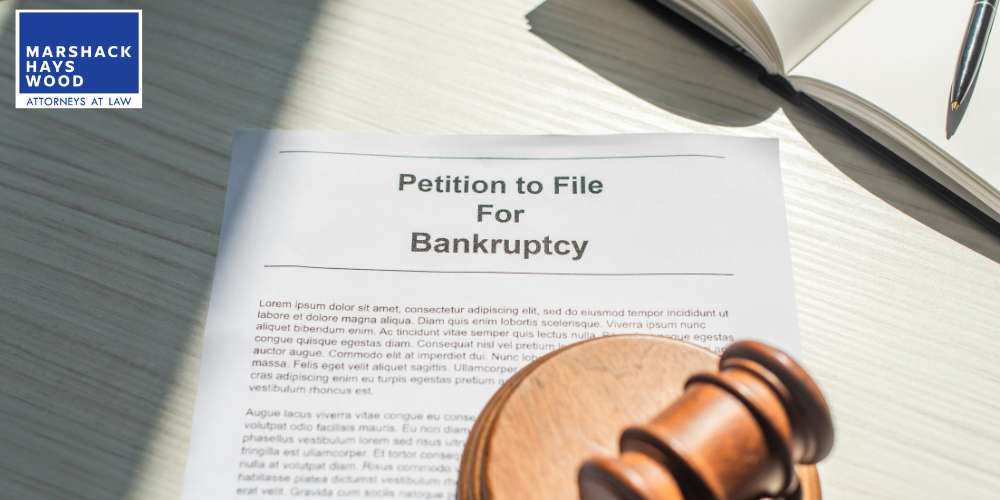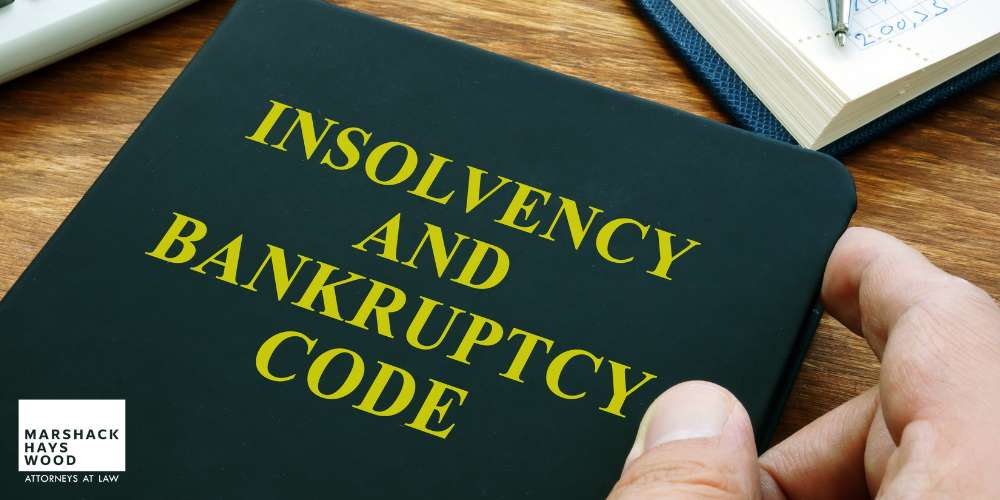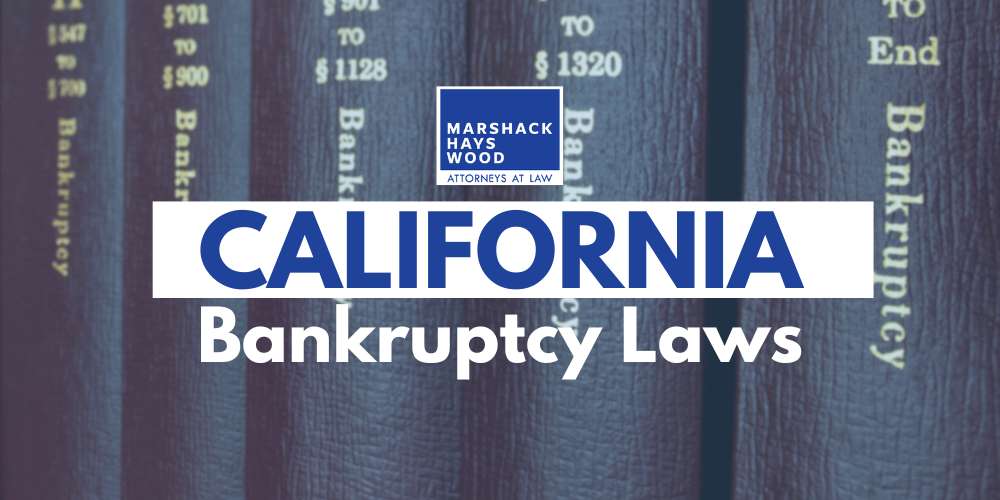If you are struggling to pay your mortgage, car loan, or other bills, filing bankruptcy may be the solution you need. It can be difficult to regain your financial breathing room without the help of a bankruptcy filing. However, filing your bankruptcy petition immediately gives you the protection of the automatic stay, which stops creditor harassment, foreclosure, repossession, and more. If you decide that a bankruptcy case is right for you, our Orange County bankruptcy lawyers can help you navigate the California bankruptcy laws and the bankruptcy process.
At Marshack Hays Wood, our team is passionate about helping California residents file bankruptcy to get back on their feet and regain control of their finances. Whether you are an individual or a business struggling with debt, bankruptcy law in California has solutions for you.
When you work with a bankruptcy lawyer at our firm, you receive compassion and decades of experience for your case. To schedule your consultation with one of our skilled attorneys, please call (949) 333-7777 or send a message online today!
What is Bankruptcy?
Bankruptcy is a useful tool that helps people and businesses who can no longer pay their debts. It does so by either liquidating assets to pay off creditors or creating a repayment plan to repay creditors over time. Bankruptcy cases begin when a person or business submits a bankruptcy petition to the local bankruptcy court. From there, they proceed according to the rules outlined in the United States Bankruptcy Code.

Types of Bankruptcy in California
Currently, there are six different types of bankruptcy available for debtors. Each type of bankruptcy is referred to by its corresponding chapter in the Bankruptcy Code. We outline each type of bankruptcy in the following sections.
Chapter 7 Bankruptcy
This chapter is referred to as liquidation bankruptcy. During a Chapter 7 case, the bankruptcy trustee will sell off the debtor’s nonexempt property from their bankruptcy estate. They will then use the proceeds from these sales to pay off the debtor’s creditors. Although Chapter 7 can result in property loss, the debtor will be completely relieved of responsibility for their remaining debts when they receive their discharge.
Chapter 7 is one of the most common forms of bankruptcy. It involves liquidation rather than a repayment plan. To qualify for Chapter 7, the filer must first pass a bankruptcy means test. To pass the means test, their income must be less than their state’s median income. If they cannot pass the means test, they must file for Chapter 13.
For those facing overwhelming debt in California, our Orange County Chapter 7 bankruptcy lawyers can help you navigate the process and achieve a fresh financial start.
Chapter 9 Bankruptcy
This chapter is reserved for financially distressed municipalities. Municipalities can include cities, towns, villages, counties, tax districts, municipal utilities, and even school districts. Chapter 9 protects municipalities from their creditors as they reorganize their debts. This protection lasts while the municipality develops and discusses a plan for adjusting its debts.
Chapter 11 Bankruptcy
This chapter allows corporations and partnerships to reorganize their debts. In Chapter 11 bankruptcy, the debtor proposes a reorganization plan to their creditors. This allows them to remain in business and repay their creditors over time. Both businesses and individuals can file Chapter 11 bankruptcy.
Sometimes, the debtor’s creditors can file an involuntary bankruptcy petition on the debtor’s behalf. They must meet certain requirements to do this. Our Chapter 11 bankruptcy lawyers at Marshack Hays Wood can guide you through these requirements and help keep your operations running.
Chapter 12 Bankruptcy
This chapter allows family farmers and family fishermen to adjust their debts. In Chapter 12, the debtor will develop and carry out a repayment plan to repay their creditors over time. This repayment period can last three to five years. It is one of the most rarely filed bankruptcy chapters.
Chapter 13 Bankruptcy
This chapter allows a debtor to keep their property and repay their debts to their creditors over time. Chapter 13 bankruptcy is also called a wage earner’s plan. Individuals with regular income can file Chapter 13 and repay their creditors in installments over a three-to-five-year period. To qualify for Chapter 13 bankruptcy, the debtor must make more than their state’s median income.
If you’re struggling with debt but want to keep your assets, filing Chapter 13 bankruptcy in Orange County can help you create a manageable repayment plan and regain financial stability.
Chapter 15 Bankruptcy
This chapter is the newest chapter added to the Bankruptcy Code. It was added by the Bankruptcy Abuse Prevention and Consumer Protection Act of 2005. Chapter 15 bankruptcy provides rules and processes for ancillary and cross-border bankruptcy cases. Like Chapter 12, it is one of the rarest forms of bankruptcy.

Am I Eligible to File for Bankruptcy in California?
Not everybody qualifies for bankruptcy. While most people do, it’s important to speak with an experienced bankruptcy attorney before submitting your bankruptcy petition. We will advise you which chapter is best for your situation and help you fully and accurately fill out your petition before filing.
Below, we outline the formal and informal qualifications for filing bankruptcy in California.
Formal Qualifications
The specific qualifications vary depending on the chapter of bankruptcy you intend to file for. Because the two most common chapters are Chapter 7 and Chapter 13, we will focus on these when discussing qualifications.
The most important formal qualification for filing Chapter 7 is passing the means test. The means test measures whether or not a debtor’s income is less than the median for their geographic area. If the debtor’s household income is less than the median, they pass the means test. If it is higher, they do not pass the means test.
When a debtor fails to pass the means test, they must file for Chapter 13 instead of Chapter 7. This is because they make enough money to repay their creditors. However, Chapter 13 filers cannot exceed certain thresholds of secured and unsecured debt. Generally, they cannot exceed $1.4 million in secured debt or $400,000 in unsecured debt.
Debtors must also complete a court-approved credit counseling program before they file for bankruptcy. They must also complete a debtor education course after they file.
Informal Qualifications
Other informal qualifications vary depending on the filer’s location and the type of bankruptcy they want to file. Certain bankruptcy forms are required for filers in certain localities, while they are not required in other areas. Usually, monthly income and expense schedules play a large role in determining whether someone can file for bankruptcy, as well as under what chapter.
In general, Chapter 7 filers should be in the red every month, meaning they are in debt. Chapter 13 filers, on the other hand, must usually be in the black, meaning they are financially solvent and can make a profit. Income and expense schedules help to determine whether a debtor can afford to make payments in a repayment plan.

Is Bankruptcy Governed by Federal Law or California Law?
The process of filing for bankruptcy is governed by federal bankruptcy laws. All bankruptcy cases are handled in federal bankruptcy courts according to the rules outlined in the United States Bankruptcy Code. The procedures for each bankruptcy proceeding are governed by the Federal Rules of Bankruptcy Procedure, as well as the local rules of each bankruptcy court.
One of the main ways that California differs from other states in bankruptcy filings is the California exemptions.
What are the California Bankruptcy Exemptions?
Bankruptcy exemptions are laws that protect certain personal property from the bankruptcy trustee. If property is exempted by state or federal bankruptcy exemptions, the trustee cannot sell it to pay creditors.
Many states allow bankruptcy filers to choose between state and federal exemptions. California does not. Instead, California bankruptcy laws allow filers to choose between Section 703 exemptions and Section 704 exemptions. Section 703 exemptions are bankruptcy-only exemptions, while Section 704 exemptions are state law exemptions.
We explain the differences between the two sets of exemptions in the following sections.
Section 703 Bankruptcy Exemptions
Filers who do not own a home or who have lived in their home for less than 10 years can benefit from Section 703 exemptions. These exemptions are as follows.
- Homestead exemption up to $26,800
- Tax-exempt retirement accounts
- All household goods valued under $675
- Public benefits and Social Security
- Life insurance policy benefits
- Jewelry up to $1,600 in value
- Motor vehicle equity up to $5,350
- Wildcard exemption up to $28,255
Section 704 Bankruptcy Exemptions
Filers who have lived in the same home for more than 10 years will likely benefit more from Section 704 exemptions. These exemptions are as follows.
- Motor vehicle equity up to $3,325
- Homestead exemption up to $300,000 or $600,000, depending on the median home prices in your area
- FEMA benefits
- Life insurance policy benefits
- Savings or checking accounts with a minimum $1,788 balance
- Public benefits and Social Security
- Retirement accounts
- Jewelry up to $8,000 in value
One of the biggest differences between 703 and 704 exemptions is that 704 exemptions do not include a wildcard exemption.

California Bankruptcy Court Locations
The State of California is divided into four bankruptcy districts. Each district serves distinct areas of California, and all but one of the four have multiple courts within their district. The four districts are the Northern, Eastern, Central, and Southern districts of California.
Below, we outline the division courts in each district and their locations and phone numbers.
Central District of California
- Los Angeles Division
- Edward R. Roybal Federal Bldg. and U.S. Courthouse
255 East Temple Street
Los Angeles, CA 90012
(855) 460-9641
- Edward R. Roybal Federal Bldg. and U.S. Courthouse
- Riverside Division
- 3420 Twelfth Street
Riverside, CA 92501
(951) 774-1000
- 3420 Twelfth Street
- Santa Ana Division
- Ronald Reagan Federal Bldg. and U.S. Courthouse
411 West Fourth Street #2030
Santa Ana, CA 92701
(714) 338-5300
- Ronald Reagan Federal Bldg. and U.S. Courthouse
- Northern Division
- 1415 State Street
Santa Barbara, CA 93101
(805) 884-4800
- 1415 State Street
- San Fernando Valley Division
- 21041 Burbank Boulevard
Woodland Hills, CA 91367
(818) 587-2900
- 21041 Burbank Boulevard
Eastern District of California
- Modesto Division
- 1200 I Street, Suite 200
Modesto, CA 95354
(209) 521-5160
- 1200 I Street, Suite 200
- Fresno Division
- Robert E. Coyle U.S. Courthouse
2500 Tulare Street, Suite 2501
Fresno, CA 93721
(559) 499-580
- Robert E. Coyle U.S. Courthouse
- Sacramento Division
- Robert T. Matsui U.S. Courthouse
501 I Street, Suite 3-200
Sacramento, CA 95814
(916) 930-4400
- Robert T. Matsui U.S. Courthouse
Northern District of California
- Santa Rosa Division
- 99 South E Street
Santa Rosa, CA 95404
(707) 547-5900
- 99 South E Street
- Oakland Division
- 1300 Clay Street
Oakland, CA 94612
(510) 879-3600
- 1300 Clay Street
- San Jose Division
- United States Courthouse
280 South First Street, Room 3035
San Jose, CA 95113
(408)535-5118
- United States Courthouse
- San Francisco Division
- PO Box 7341
235 Pine Street
San Francisco, CA 94102
(415) 268-2300
- PO Box 7341
Southern District of California
Jacob Weinberger U.S. Courthouse
325 West F Street
San Diego, CA 92101
(619) 557-5620

Do I Need an Attorney to File Bankruptcy in California?
Individuals can file bankruptcy without an attorney if they wish. This is referred to as a “pro se” filing. However, we strongly advise against filing bankruptcy without help from a skilled bankruptcy lawyer. Even one small mistake or missed deadline could jeopardize your ability to get a bankruptcy discharge.
If you are an individual or business struggling with debt in California, the bankruptcy attorneys at Marshack Hays Wood can help. During your consultation with us, we will evaluate your situation and advise you of the best course of action. Having an attorney on your side can ensure you understand California bankruptcy laws and ensure your bankruptcy case proceeds as smoothly as possible.
Contact an Orange County Bankruptcy Attorney with Marshack Hays Wood Today
Whether you need to file for consumer bankruptcy or business bankruptcy in Orange County, CA, the experienced bankruptcy lawyers at Marshack Hays Wood are here for you. We have considerable experience handling both consumer and business bankruptcy cases and understand California bankruptcy laws through and through, so you can rest assured that our team will have your back throughout the process.
To schedule a consultation with us about your case, please call our office at (949) 333-7777 or reach out online today.

